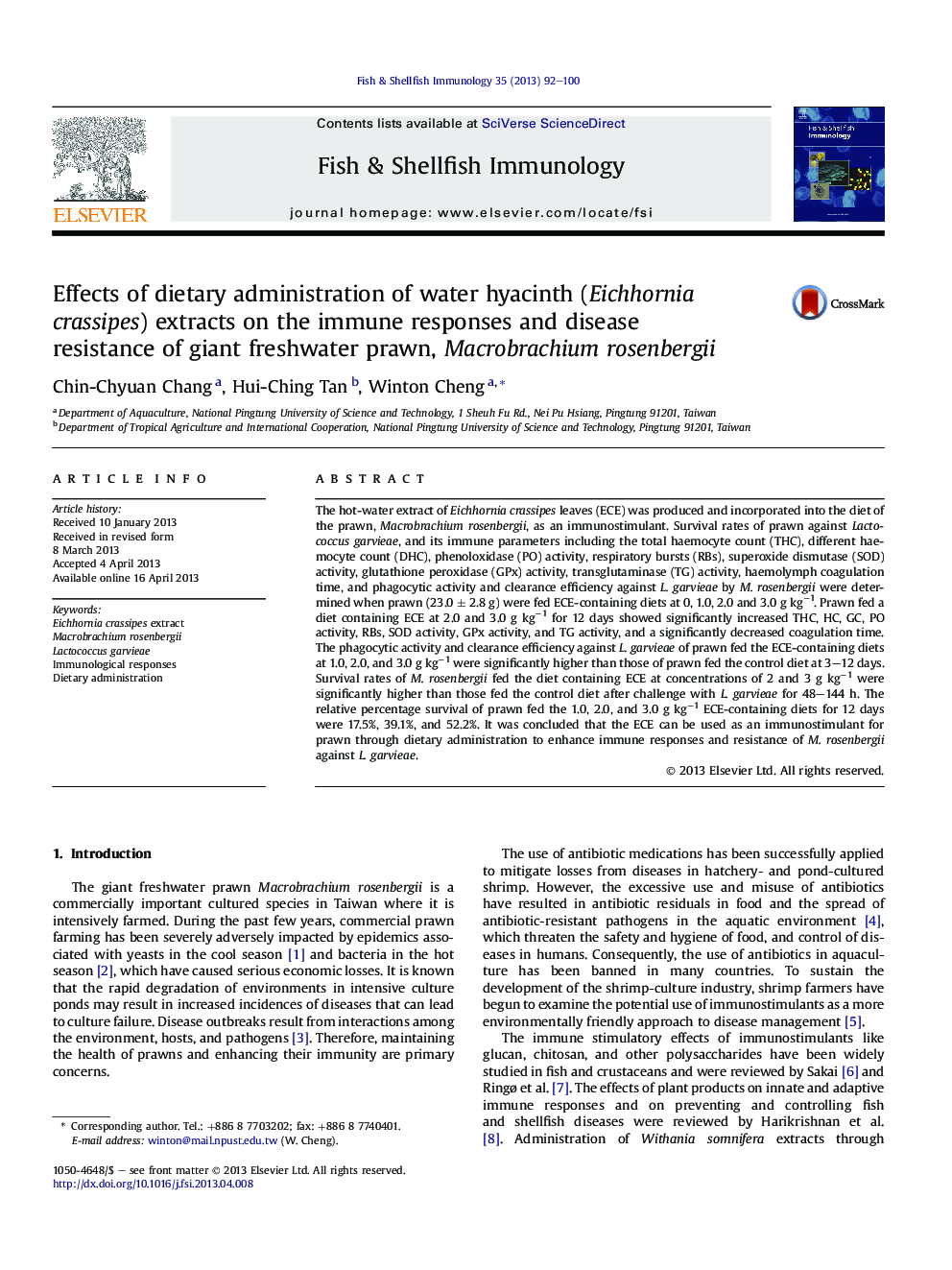| Article ID | Journal | Published Year | Pages | File Type |
|---|---|---|---|---|
| 2432077 | Fish & Shellfish Immunology | 2013 | 9 Pages |
•Extract of water hyacinth enhanced the resistance to pathogen infection.•Extract of water hyacinth up-regulated the immunological responses.•Extract of water hyacinth shortened the coagulation time.•Dietary with water hyacinth extracts at 2 and 3 g kg−1 improved the immunity of prawn.
The hot-water extract of Eichhornia crassipes leaves (ECE) was produced and incorporated into the diet of the prawn, Macrobrachium rosenbergii, as an immunostimulant. Survival rates of prawn against Lactococcus garvieae, and its immune parameters including the total haemocyte count (THC), different haemocyte count (DHC), phenoloxidase (PO) activity, respiratory bursts (RBs), superoxide dismutase (SOD) activity, glutathione peroxidase (GPx) activity, transglutaminase (TG) activity, haemolymph coagulation time, and phagocytic activity and clearance efficiency against L. garvieae by M. rosenbergii were determined when prawn (23.0 ± 2.8 g) were fed ECE-containing diets at 0, 1.0, 2.0 and 3.0 g kg−1. Prawn fed a diet containing ECE at 2.0 and 3.0 g kg−1 for 12 days showed significantly increased THC, HC, GC, PO activity, RBs, SOD activity, GPx activity, and TG activity, and a significantly decreased coagulation time. The phagocytic activity and clearance efficiency against L. garvieae of prawn fed the ECE-containing diets at 1.0, 2.0, and 3.0 g kg−1 were significantly higher than those of prawn fed the control diet at 3–12 days. Survival rates of M. rosenbergii fed the diet containing ECE at concentrations of 2 and 3 g kg−1 were significantly higher than those fed the control diet after challenge with L. garvieae for 48–144 h. The relative percentage survival of prawn fed the 1.0, 2.0, and 3.0 g kg−1 ECE-containing diets for 12 days were 17.5%, 39.1%, and 52.2%. It was concluded that the ECE can be used as an immunostimulant for prawn through dietary administration to enhance immune responses and resistance of M. rosenbergii against L. garvieae.
